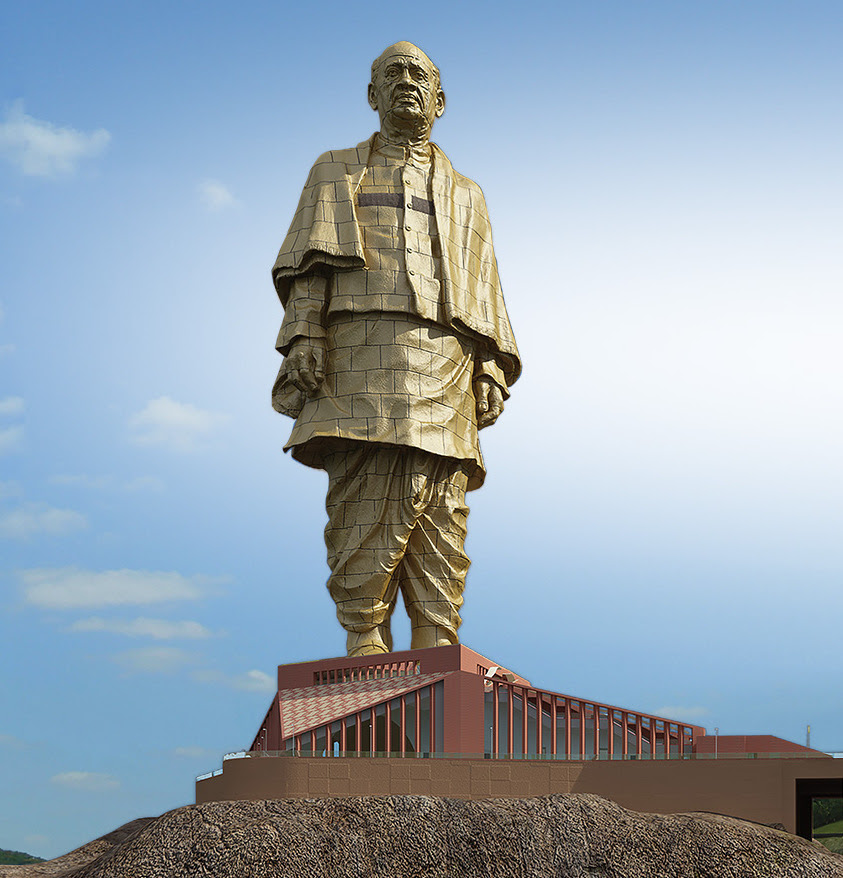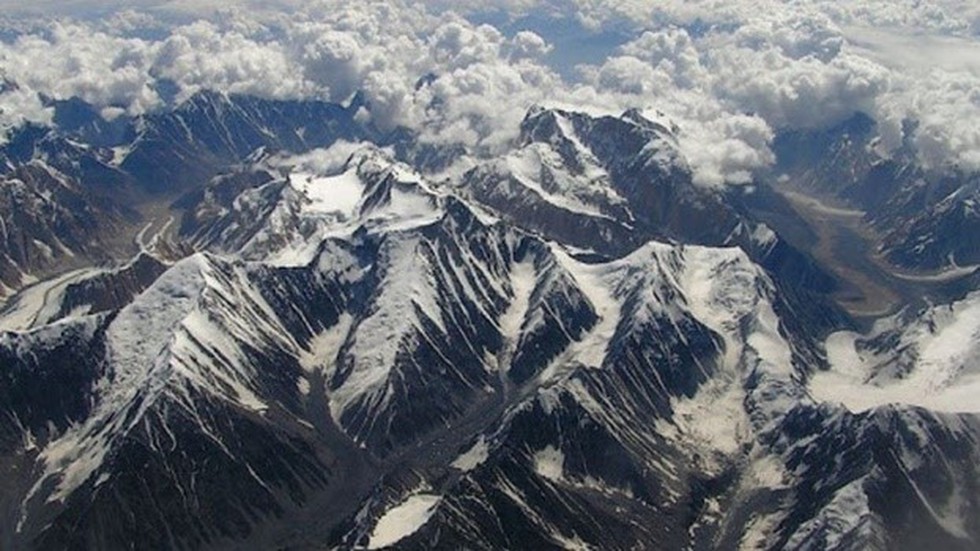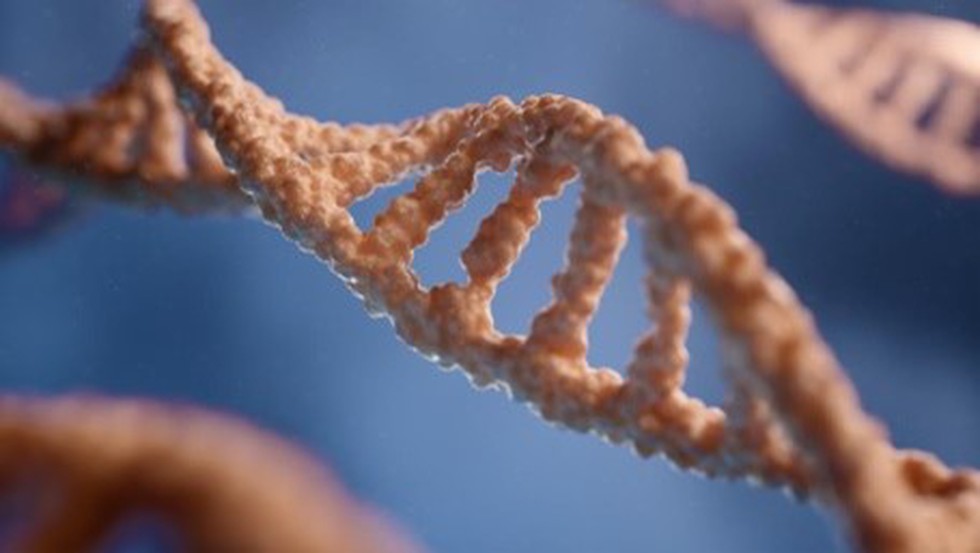CONTENTS
- Inclusion of 80 Castes in OBC List by NCBC
- Right to change one’s name and the right to life
- United Nations High Seas Treaty
- Statue of Unity
- Hindu Kush Himalayas
- Y chromosome
Inclusion of 80 Castes in OBC List by NCBC
Context:
National Commission for Backward Classes(NCBC) is processing the request for the approval of about 80 more castes in six States, (Maharashtra, Telangana, Andhra Pradesh, Himachal Pradesh, Punjab, and Haryana) for the inclusion in the OBC list.
Relevance:
GS II: Polity and Governance
Dimensions of the Article:
- About Other Backward Class (OBC)
- About National Commission for Backward Classes
About Other Backward Class (OBC):
- OBC refers to socially and educationally backward classes of citizens.
- The Supreme Court has ruled that the creamy layer, i.e., socially and economically advanced individuals within the OBC category, should be excluded from reservations.
Role of National Commission for Backward Classes (NCBC):
- NCBC is a statutory body responsible for reviewing requests for caste inclusion in the Central OBC list.
- The commission forms a Bench to examine proposals and forwards its decisions to the Union government.
- Once approved by the cabinet, legislation is enacted, and the President notifies the changes.
Constitutional Provisions:
- Article 15(4) empowers the state to make special provisions for the advancement of socially and educationally backward classes, including OBCs.
- These provisions include reservation of seats in educational institutions, financial assistance, scholarships, and housing.
- Article 16(4) allows the state to enact laws for the reservation of appointments or posts in favor of OBCs.
Achievements of the Union Government:
- Since 2014, the government has added 16 communities to the Central OBC list in Himachal Pradesh, Bihar, Jharkhand, Madhya Pradesh, and Jammu and Kashmir.
- The 105th Amendment to the Constitution affirms states’ rights to maintain their own OBC lists, preserving the benefits for 671 State OBC communities.
About National Commission for Backward Classes
- 102nd Constitution Amendment Act, 2018 provides constitutional status to the National Commission for Backward Classes (NCBC).
- It has the power to look into welfare claims and programmes for socially and academically disadvantaged groups.
- Prior to this, the Ministry of Social Justice and Empowerment was responsible for the NCBC as a statutory organisation.
Background of NCBC
- Two Backward Class Commissions were appointed in 1950s and 1970s under Kaka Kalelkar and B.P. Mandal respectively.
- Kaka Kalelkar commission is also known as the First Backward Classes Commission.
- The Supreme Court ordered the government to establish a permanent committee to consider, investigate, and recommend the inclusion and exclusion of various Backward Classes for the purpose of benefits and protection in the Indra Sawhney case of 1992.
- The National Commission for Backward Classes Act, passed by parliament in 1993 in accordance with these directives, established the NCBC.
- The 123rd Constitution Amendment bill of 2017 was presented in Parliament in order to better protect the interests of underprivileged groups.
- The National Commission for Backward Classes Act, 1993, was repealed by a different law that was approved by Parliament, making the 1993 Act obsolete.
- The bill got the President assent in August 2018 and provided the constitutional status to NCBC.
Composition:
- The Commission consists of:
- Chairperson
- Vice-Chairperson
- Three other Members in the rank and pay of Secretary to the Govt of India.
- Their condition of service and tenure of office has been notified by the Ministry of Social Justice and Empowerment.
- NCBC is headquartered in Delhi.
Constitutional Provisions
- Article 340 deals with the need to, inter alia, identify those “socially and educationally backward classes”, understand the conditions of their backwardness, and make recommendations to remove the difficulties they face.
- 102nd Constitution Amendment Act inserted new Articles 338 B and 342 A.
- The amendment also brings about changes in Article 366.
- will be required if the list of backward classes is to be amended.
NCBC- Powers and Functions
- The commission investigates and monitors all matters relating to the safeguards provided for the socially and educationally backward classes under the Constitution or under any other law to evaluate the working of such safeguards.
- It participates and advises on the socio-economic development of the socially and educationally backward classes and to evaluate the progress of their development under the Union and any State.
- It presents to the President, annually and at such other times as the Commission may deem fit, reports upon the working of those safeguards. The President laid such reports before each House of Parliament.
- Where any such report or any part thereof, relates to any matter with which any State Government is concerned, a copy of such report shall be forwarded to the State Government.
- NCBC has to discharge such other functions in relation to the protection, welfare and development and advancement of the socially and educationally backward classes as the President may, subject to the provisions of any law made by Parliament, by rule specify.
- It has all the powers of a civil court while trying a suit.
-Source: The Hindu
Right to Change One’s Name and The Right To Life
Context
The right to change one’s name or surname is a part of the right to life under Article 21, the High Courts (HC) of Allahabad and Delhi recently said.
Relevance:
GS II: Polity and Governance
Dimensions of the Article:
- Cases before the High Courts
- Rulings of the High Courts
- The High Courts’ views on Article 21
- Restrictions on the right to change names
Cases before the High Courts:
Case 1: Sadanand & Anr. vs CBSE & Ors
- A plea was filed by two brothers before the Delhi High Court.
- The father had changed his surname due to caste atrocities and had updated it in various public documents.
- CBSE refused to update the brothers’ certificates with the father’s new surname, as it would change their caste, which could be misused.
Case 2: Md. Sameer Rao vs. State of UP
- The Allahabad High Court dealt with a petition against the rejection of an application to change the petitioner’s name in his educational certificates.
- The state argued that a change in the name is not an absolute right and is subject to restrictions imposed by law.
Rulings of the High Courts:
Allahabad High Court:
- The authorities arbitrarily rejected the application for a name change, violating the petitioner’s fundamental rights guaranteed under Article 19(1)(a), Article 21, and Article 14 of the Constitution.
- A person’s name is an essential part of their identity and falls within the realm of the right to privacy.
- Consistency in identity-related documents is crucial to avoid confusion or mischief.
Delhi High Court:
- The father changed his surname to overcome social stigma and disadvantages faced by his sons, and CBSE’s denial was unjustified.
- The petitioners have the right to have an identity that gives them an honorable and respectable position in society.
- If they faced disadvantages or social prejudices due to their surname, they are entitled to a change in their identity.
The High Courts’ views on Article 21:
Both the Delhi and Allahabad High Courts recognized the importance of Article 21 in the cases discussed.
Allahabad High Court:
- The court observed that the right to keep a name of choice or change the name according to personal preference falls within the broad scope of the right to life and personal liberty guaranteed under Article 21.
- It referred to a ruling by the Kerala High Court in 2020, which stated that having a name and expressing it is a part of the right to freedom of speech and expression under Article 19(1)(a) and Article 21.
Delhi High Court:
- The court held that the “Right to Identity” is an an intrinsic part of the Right to Life under Article 21.
- It acknowledged that the Right to Life encompasses the Right to Live with Dignity, which includes the freedom from the constraints of casteism faced by individuals based on their caste affiliation.
Restrictions on the right to change names :
- Reasonable Restrictions: The Allahabad High Court clarified that the right to change or keep one’s name is not an absolute right and is subject to reasonable restrictions.
- Article 19(2): The state or its instrumentalities cannot hinder the use of any name or change of name, except as prescribed under Article 19(2) of the Constitution. Article 19(2) allows for restrictions in the interests of security and sovereignty of India, friendly relations with foreign states, public order, decency, or morality.
- Fair, Just, and Reasonable: Any restrictions imposed by law on fundamental rights, including the right to change names, must be fair, just, and reasonable. This principle was established in the case of K. S. Puttaswamy vs. Union of India (2017).
- Proportionality: The principle of proportionality is crucial in determining the validity of restrictions on rights. It ensures that the encroachment on the right is not disproportionate to the purpose of the law.
-Source: Down To Earth
United Nations High Seas Treaty
Context:
The world’s first international treaty to protect the high seas was recently adopted by the United Nations.
Relevance:
GS II: International Relations
Dimensions of the Article:
- About UN High Seas Treaty
- What are High Seas?
About UN High Seas Treaty:
- The UN High Seas Treaty is the first-ever treaty to protect the world’s oceans outside national boundaries.
- It is also referred to as the ‘Paris Agreement for the Ocean’.
- The treaty is legally binding and aims to protect marine life in international waters.
- Its goal is to establish protected areas covering 30% of the seas by 2030, a pledge made by countries at the UN biodiversity conference in 2022.
- The treaty provides a legal framework for creating marine protected areas (MPAs) to safeguard wildlife and share genetic resources of the high seas.
- It covers environmental assessments to evaluate potential damage from commercial activities, like deep-sea mining.
- The treaty establishes a conference of the parties (CoP) that meets periodically to hold member states accountable for governance and biodiversity issues.
- Signatories of the treaty pledge to share ocean resources.
- The UN High Seas Treaty is built on the legacy of the UN Convention on the Law of the Sea (UNCLOS), the last international agreement on ocean protection signed in 1982. UNCLOS established an area called the high seas.
What are High Seas?
High seas refer to the areas of the oceans that are beyond the national jurisdiction of any country. Here are some key points to note:
- The high seas begin at the border of countries’ exclusive economic zones beyond 370 km (200 nautical miles) from a country’s coastline and extend up to the outer limits of the continental shelf.
- All countries have the right to use the high seas for shipping, fishing, and scientific research.
- The high seas comprise more than 60% of the world’s oceans by surface area.
- Due to a lack of regulation and monitoring, activities on the high seas are often vulnerable to exploitation, making it important to protect them through international treaties and agreements.
-Source: The Hindu
Statue of Unity
Context:
The Statue of Unity Area Development and Tourism Governance Authority (SOUADTGA) recently issued a tender to resume the suspended helicopter joyride services at the Statue of Unity.
Relevance:
GS I: Culture
Dimensions of the Article:
- About Statue of Unity
- Sardar Vallabhbhai Patel
Statue of Unity: A Tribute to Sardar Vallabhbhai Patel

- The statue was built to honor Sardar Vallabhbhai Patel, also known as the ‘Iron Man of India.’
- Location: Situated in Gujarat, on the banks of the Narmada River, on the River Island of Sadhu Bet, overlooking the Narmada Dam.
- Impressive Height: Standing at a height of 182 meters, the statue is recognized as the tallest in the world, surpassing the height of China’s Spring Temple Buddha by 177 feet.
- Construction and Design: Indian construction company Larsen & Toubro (L&T) undertook the construction of the statue, while the design was created by renowned sculptor Ram V Sutar, a recipient of the Padma Bhushan award.
Sardar Vallabhbhai Patel:
Early Life and Activism:
- Vallabhbhai Jhaverbhai Patel, known as Sardar Patel, was born on 31st October 1875 in Nadiad, Gujarat.
- He was an Indian barrister and statesman, and one of the prominent leaders of the Indian National Congress during the struggle for Indian independence.
- In 1918, Patel gained recognition for organizing mass campaigns against the Bombay government’s decision to collect full annual revenue taxes despite crop failures caused by heavy rains in Kaira, Gujarat.
- He embraced Mahatma Gandhi’s ideas and actively participated in the non-cooperation movement in 1920, adopting indigenous Khadi items and boycotting foreign clothes.
- Patel led the Satyagraha movement in Nagpur in 1923, protesting against the British law that banned the hoisting of the Indian Flag.
- In 1928, he successfully led the landowners of Bardoli in their resistance against increased taxes, earning him the title of “sardar” or leader.
Role in Independent India:
- Patel was appointed as the first Deputy Prime Minister and Home Minister of India from 1947 to 1950.
- He played a crucial role in the integration of numerous Indian princely states, aiming to forge a united India from over 560 semi-autonomous princely states and British-era colonial provinces.
- Through frank diplomacy and, if necessary, military action, Patel’s leadership enabled the accession of almost every princely state, making him the real unifier of India.
- He is remembered as the “Patron saint of India’s civil servants” for establishing the modern all-India services system and is widely hailed as the Iron Man of India.
- Patel held important positions in the Constituent Assembly of India, including the Provincial Constitution Committee and the Advisory Committee on Fundamental Rights, Minorities, and Tribal and Excluded Areas.
Legacy and Recognition:
- Since 2014, Rashtriya Ekta Diwas or National Unity Day is observed on 31st October each year to pay tribute to Sardar Vallabhbhai Patel, who played a pivotal role in India’s freedom struggle and the integration of the country.
- He was posthumously awarded the Bharat Ratna, India’s highest civilian honor, in 1991, in recognition of his significant contributions.
-Source: Indian express
Hindu Kush Himalayas
Context:
According to a new report from International Centre for Integrated Mountain Development (ICIMOD), the Hindu Kush Himalayas (HKH) have seen a 65 per cent faster loss of glacier mass

Relevance:
GS I: Geography
Dimensions of the Article:
- Hindu Kush Himalayas (HKH) Region
- International Centre for Integrated Mountain Development (ICIMOD)
Hindu Kush Himalayas (HKH) Region:
- The HKH region includes Afghanistan, Bangladesh, Bhutan, China, India, Kyrgyzstan, Mongolia, Myanmar, Nepal, Pakistan, Tajikistan, and Uzbekistan.
- Often referred to as the Third Pole, it has significant climate implications.
- It holds the largest volume of ice and snow outside of the Arctic and Antarctica.
- The ice and snow in this region are crucial sources of water for 12 rivers that flow through 16 Asian countries.
International Centre for Integrated Mountain Development (ICIMOD):
- ICIMOD is an intergovernmental knowledge and learning center representing the people of the HKH region.
- It is headquartered in Kathmandu, Nepal.
- The center serves eight regional member countries: Afghanistan, Bangladesh, Bhutan, China, India, Myanmar, Nepal, and Pakistan.
Functions of ICIMOD:
- ICIMOD focuses on information and knowledge generation and sharing to address critical mountain-related challenges.
- It facilitates the integration of scientific findings, policies, and practical actions on the ground.
- The center provides a platform for experts, planners, policymakers, and practitioners to exchange ideas and perspectives, working towards sustainable mountain development.
-Source: Down To Earth
Y Chromosome
Context:
Recently, researchers have discovered that the Y chromosome possesses genes linked to ageing and lifespan regulation.

Relevance:
GS III: Science
Dimensions of the Article:
- Key findings in recent research related to the Y chromosome
- About Chromosomes
Key findings in recent research related to the Y chromosome
- Essential Genes: Scientists have identified that the Y chromosome contains genes that play crucial roles in various biological functions. These genes are particularly associated with ageing and the regulation of lifespan.
- Neanderthal Genome: Analysis of the genome sequences of Neanderthals, an extinct human relative, has revealed indications of the replacement of the Y chromosome by modern humans. This suggests that genetic changes in the Y chromosome occurred during the evolution of modern humans.
- Future Role: The findings suggest that the Y chromosome may lose its status as the primary determinant of maleness in the future. This implies that other chromosomes may take on significant roles in determining male characteristics.
About Chromosomes:
- Thread-like structures located inside the nucleus of animal and plant cells.
- Composed of protein and a single molecule of DNA (deoxyribonucleic acid).
- Inherited from parents and passed on to offspring.
Function and Importance
- DNA within chromosomes contains specific instructions that make each living organism unique.
- Plays a crucial role in determining an individual’s traits, characteristics, and biological functions.
Human Chromosomes
- Humans have 22 pairs of autosomes (non-sex chromosomes) and one pair of sex chromosomes.
- Sex chromosomes are designated as X and Y.
- All biological males have one X and one Y chromosome.
- All biological females have two X chromosomes.
Role of the Y Chromosome
- The Y chromosome, known as the “master of maleness,” determines biological male sex.
- Carries genes that play a role in sex determination.
- Traditionally considered the primary factor in determining maleness.
-Source: The Hindu




